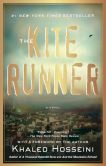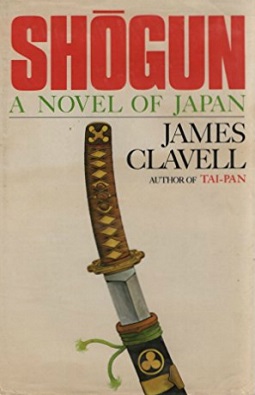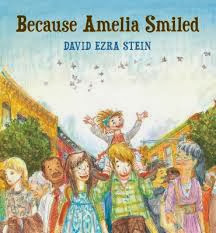By Carol Baicker-McKee
I love pairing up picture books when I read to kids - the tension
between the two books can generate as much lively discussion as what's
in each book. That's the case with the two books I'm reviewing today as another
"Something Old, Something New" picture book pairing.
Something Old: Harold and the Purple Crayon by Crockett Johnson (1955)
Johnson's simple but oh-so-appealing and creative
book has been in print continuously for the nearly 60 years since it first appeared and routinely appears in top picture book lists - and it's easy to see why. The small volume features a young boy, a purple crayon - and an imagination come to life. Harold takes his purple crayon on a nighttime journey that he creates for himself as he goes. There is tension and humor along with a spare text and equally spare graphic loveliness.
The story is so well loved that it has spawned spinoffs in
many media: in addition to the six other Harold books that Johnson created, there are
a short film, animations of several of the other Harold titles, a documentary, a thirteen-episode TV series, an iPad app, theater adaptations - and a computer-animated feature film in the works. (It was to have been produced by Maurice Sendak, but following his death, Steven Spielberg has taken over.)
This is a book every child should know - and preferably, own.
Johnson (1906-1977), whose real name was David Johnson Leisk, came to children's books from careers in commercial art and cartooning (he did the popular strip
Barnaby - Harold strongly resembles its protagonist). He also illustrated the classic story
The Carrot Seed, written by his wife, the renowned children's writer
Ruth Krauss. (That's another book every child should know.)
Something New: Journey by Aaron Becker (2013)
Okay, I'm just going to say it. This is the
book I hope wins this year's Caldecott. Even though it's yet
another book illustrated by a man instead of a woman (and you can read how I feel about
that). Even though it's yet
another wordless book. Even though it's yet
another obvious retelling rather than an original story. It's that breathtakingly gorgeous, that magical, that well done. I want one of
the signed giclee prints for Christmas (of the treehouse, of course, if anyone from my family is reading this - though the treehouse doesn't appear in the book). I'll settle for
an autographed copy of the book though.
Many reviewers (who shall go unnamed here, but are easy to find with a Google search) have noted the similarity of
Journey to
Harold and the Purple Crayon - and some have done it in a way that seems to me to imply disdain, as if Becker were stealing an idea and trying to put one over on us.
BUT it's a completely obvious homage. Becker borrows images and events from the
Harold books and mashes them together in a way that's new while evocative.
Here I've juxtaposed a page from
Journey with its inspiration from
Harold and the Purple Crayon:
And here's another
Journey page with the image from
Harold and the Fairy Tale (1956) that surely prompted it:
(Becker also borrows from other well known tales -- such as his use of a near colorless palette in the girl's real world that's supplanted by vivid color in the fantasy world, ala
The Wizard of Oz.) He even...
SPOILER ALERT!!!!!
...inserts Harold, complete with purple crayon and its magical abilities, at the end of the story.
If Becker had wanted to hide what he was up to, I'm sure he sure could have been a lot more subtle.
The children's book field is littered with retellings and homages -
Journey is nothing new in this respect. They're often vehicles publishers suggest to illustrators, as a way to let them create a book and garner both the writing and illustrating royalties even if they aren't skilled writers. The only thing that's different in this instance, really, is that instead of being inspired by an ancient folktale, Becker takes his inspiration from a more recent classic, with a known author-illustrator.
Aaron Becker, like Crockett, comes to illustration from another art field - from film-making. His website,
storybreathing, showcases his many talents and includes lots of fascinating goodies about the book, including
a trailer that's simply amazing and
a fascinating video on the making of the book.
Sharing these Books with Kids
First, please note that these books are for the older end of the picture book range (and continue through adults). Many toddlers will find some of the images scary (even in
Harold I've seen little ones frightened by the dragon or the water going over Harold's head.) I'm always inclined to read both books,
Harold first, without noting the similar stories and wait a bit to see whether the kids catch it on their own.
From there, you can let them comb the books, looking for similarities (be sure to have the other Harold stories available too, for the images borrowed from them). After that, you can have a conversation about the ways they are different and wonder about the whys - the use of color and detail, the use of words (or not), the inclusion of back story, the gender of the main characters, the colors of their respective crayons, the resolutions of the stories, and so on. Even the difference in size, shape, and size is interesting to talk about. Talk about which the kids like better as well as the different kinds of feelings produced by the two illustrators' approaches.
With older kids, you can broach some even more interesting topics like these:
1) In both books, the kids can control their worlds by what they draw. Why do you suppose both end up drawing scary things?
2) How do the kids get out of tough situations, using their crayons? Was there ever a time you wished you had a magical crayon to get you out of a tough situation? What would you have drawn?
3) If you were making up your own world, what would you put in it? What would you leave out? Why?
Making These Books a Special Gift
I plan on giving these as a set this holiday season, and I'll make the gift extra special by including:
- A crayon (perhaps green. Or blue. Or maybe a box of crayons. Haven't decided...),
- Watercolors or tempera paints or a set of markers or colored pencils for experimenting with color
- Maybe some different media, to encourage yet another approach to the story? Maybe cardstock and lightweight cardboard, chenille stems,clay? paper-mache?), along with scissors and tape or glue to experiment with a 3-D telling,
- A roll of paper - there's something about a whole lo-o-o-o-ong blank page that spurs imaginative drawing
- A blank book
For older kids, you can't go wrong by giving them some artist-quality materials - it makes such a difference in the quality of what they can make. And perhaps more importantly, it makes them feel respected and capable - and what better gift is there than that?












.jpg)



































